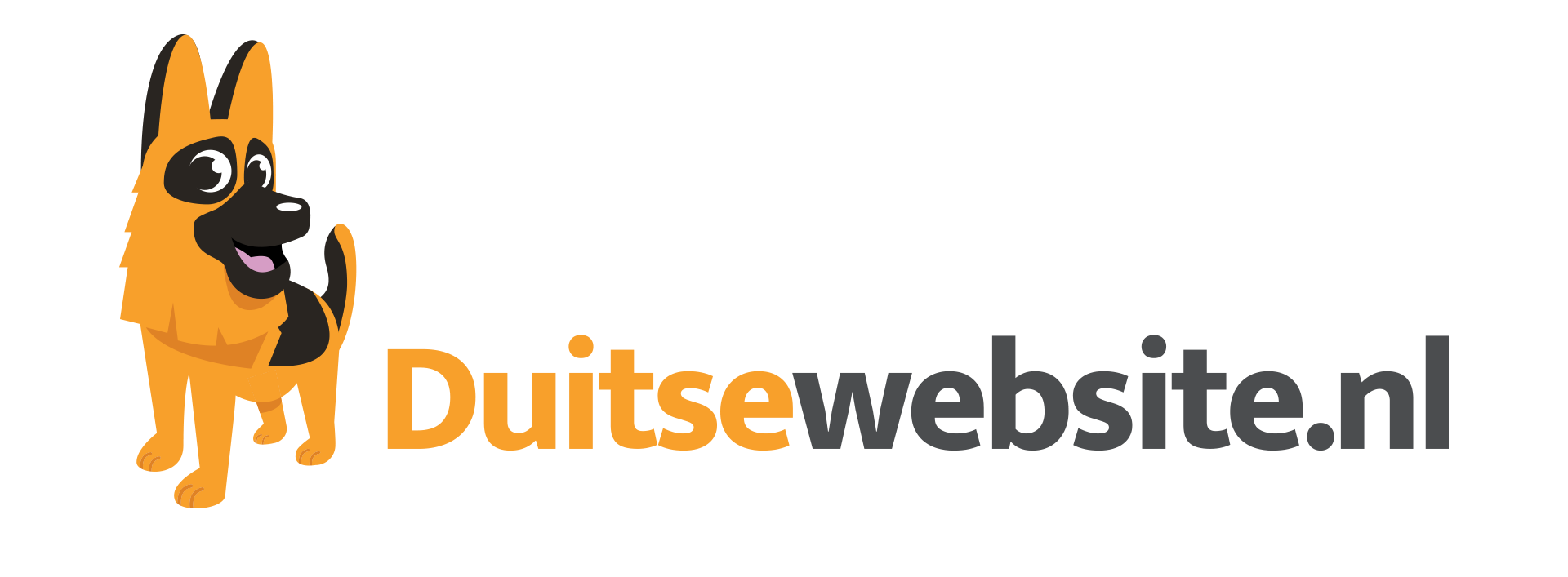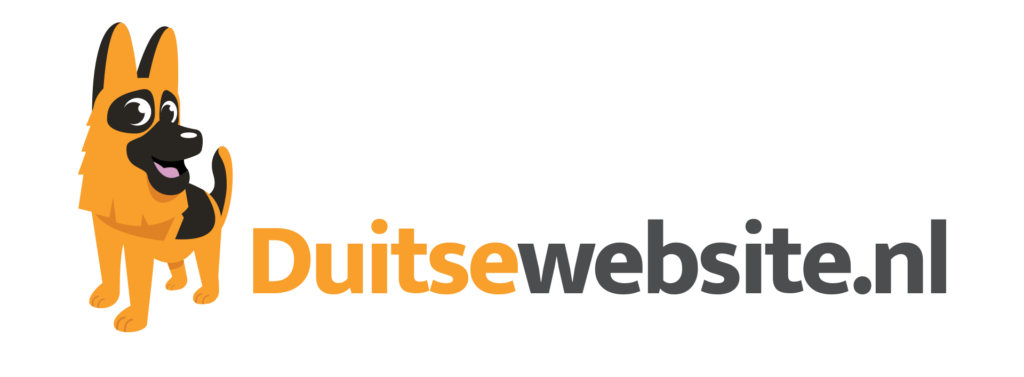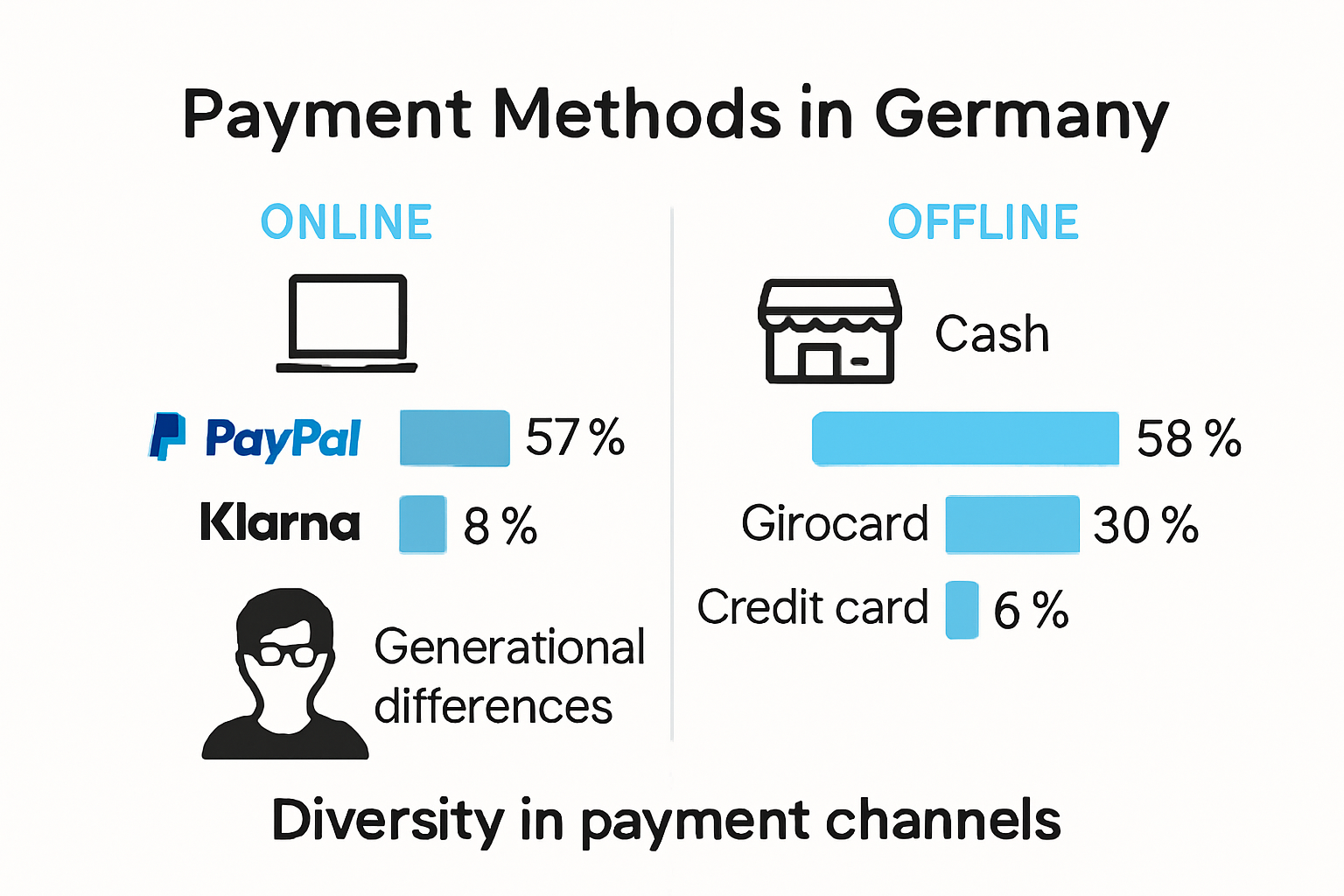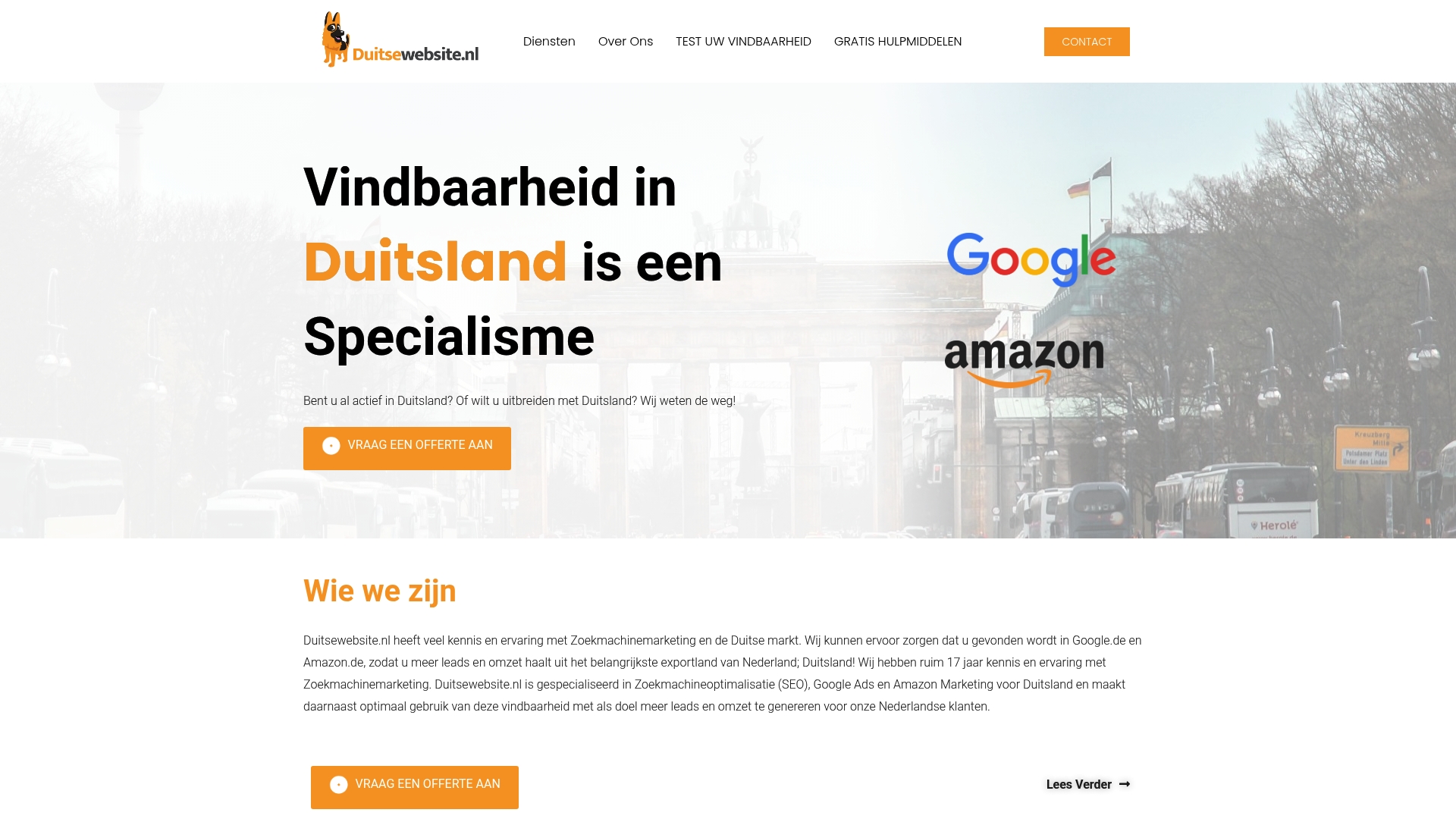Every Dutch business eyeing Germany quickly realises just how different payment habits can be. Germans still hand over physical cash for nearly 55% of in-store purchases, even as mobile wallets and QR payments sweep across Europe. It might sound like old habits die hard and digital progress is slow. The real surprise is that Germany is quietly racing ahead with contactless tech and strict security, so playing by their rules can actually set your brand apart.
Table of Contents
- Understanding Payment Methods In Germany
- Popular Online And Offline Payment Options
- How Dutch Businesses Can Adapt Payment Strategies
- Compliance And Trust In German Transactions
Quick Summary
| Takeaway | Explanation |
|---|---|
| Adapt payment methods to consumer preferences | Tailor your payment options based on the evolving preferences of different consumer segments to enhance satisfaction and market penetration. |
| Emphasise security and transparency | Implement robust security measures such as multi-factor authentication to build trust with German consumers and comply with regulations. |
| Utilise a multi-channel payment strategy | Combine traditional payment methods with modern digital solutions to cater to a diverse consumer base in Germany. |
| Recognise cash’s ongoing importance | Be aware that a significant portion of transactions are still conducted in cash, especially among older demographics. |
| Invest in compliance and ethical practices | Commitment to strict regulatory adherence can differentiate your business and foster lasting relationships in the German market. |
Understanding Payment Methods in Germany
For Dutch businesses expanding into the German market, understanding the intricacies of payment methods is crucial for successful market entry and customer satisfaction. Germany presents a unique payment landscape that differs significantly from other European markets, requiring careful navigation and strategic approach.
The Evolution of Payment Preferences
German consumers exhibit a distinct set of preferences when it comes to payment methods, which have been evolving rapidly in recent years. A comprehensive 2023 study revealed fascinating insights into the generational shifts in payment preferences. Younger consumers are increasingly gravitating towards digital payment solutions, while older demographics still maintain a strong preference for traditional banking methods.
The research highlighted that factors such as age, income, and urban living significantly influence payment choices. For Dutch businesses, this means developing a nuanced approach that can cater to diverse consumer segments. The digital transformation is particularly evident in mobile and online payment technologies, with services like PayPal and Apple Pay gaining substantial traction among younger German consumers.
Digital vs Traditional Payment Landscape
Research from payment behaviour studies demonstrates an interesting phenomenon: mobile payment methods can actually influence consumer spending patterns. The study found that digital payment platforms tend to increase the average transaction value compared to traditional cash payments. This insight is particularly valuable for Dutch businesses looking to optimize their payment strategies in the German market.
The traditional payment ecosystem in Germany remains robust, with Girocard playing a pivotal role. As detailed in banking industry reports, this interbank network connects virtually all ATMs and banks, with cards often co-branded with international payment networks like Mastercard and Visa. However, the landscape is shifting, with some banks beginning to phase out traditional girocard systems in favour of more versatile debit card options.
Strategic Considerations for Dutch Businesses
For Dutch enterprises looking to establish a strong presence in Germany, understanding these payment nuances is more than a technical requirement—it’s a strategic imperative. The key is flexibility and multi-channel payment support. Businesses should be prepared to offer a range of payment methods, from traditional bank transfers to cutting-edge digital solutions.
Moreover, our comprehensive guide on payment methods provides deeper insights into navigating this complex landscape. Dutch companies must recognize that payment preferences are not just about transaction mechanics, but about building trust and providing convenience to German consumers.
Successful market entry requires a sophisticated understanding of these payment dynamics. By adapting to the nuanced preferences of German consumers and offering seamless, secure payment options, Dutch businesses can significantly enhance their market penetration and customer satisfaction in Germany.
Popular Online and Offline Payment Options
Dutch businesses expanding into the German market must familiarise themselves with the diverse payment ecosystem that spans both online and offline channels. Germany offers a sophisticated and nuanced payment landscape that reflects both traditional banking practices and modern digital innovations.
To help Dutch businesses quickly assess the main online and offline payment methods in Germany, the table below compiles their key characteristics and consumer preferences.
| Payment Method | Channel | Consumer Preference/Usage | Key Consideration |
|---|---|---|---|
| PayPal | Online | Most popular method (~45% online shoppers) | Security, speed, trust |
| Klarna | Online | Gaining ground, especially for instalments | Flexible payments, transparency |
| Sofort Banking | Online | Popular for direct bank transfers | Immediate transfer, secure |
| Apple Pay / Google Pay | Online/Offline | Popular with younger, tech-savvy users | Seamless mobile transactions |
| Girocard / EC Card | Offline | Widely used for card payments | Linked to bank accounts, co-branded |
| Cash | Offline | Still ~55% of in-store purchases | Preferred by older demographics |
| Debit Cards | Offline | Preferred over credit cards | Immediate payment, financial prudence |
Online Payment Methods
In the digital realm, German consumers demonstrate a sophisticated approach to online payments. A comprehensive e-commerce report reveals that digital payment solutions have gained significant traction. PayPal remains the dominant online payment method, with approximately 45% of German online shoppers preferring this platform for digital transactions.
Other prominent online payment methods include:
- Klarna: A popular buy now, pay later service that allows consumers to split payments or defer total costs.
- Sofort Banking: A direct online banking payment method that enables immediate bank transfers.
- Apple Pay and Google Pay: Increasingly adopted by younger, tech-savvy consumers for seamless mobile transactions.
Research from digital payment analysts indicates that German consumers prioritise security and transparency in online transactions. This means Dutch businesses must implement robust payment systems that demonstrate clear, secure transaction processes.
Offline Payment Preferences
Traditional payment methods continue to play a crucial role in Germany’s retail environment. Girocards and EC cards remain fundamental to offline transactions, with cash still maintaining a significant presence. A banking industry survey found that approximately 55% of point-of-sale transactions are still conducted using cash, reflecting a cultural preference for physical currency.
Debit cards linked directly to bank accounts are preferred over credit cards. Many German consumers are cautious about credit, preferring immediate, transparent transactions. This preference stems from a cultural approach that emphasises financial prudence and immediate value exchange.
Emerging Payment Technologies
The German payment landscape is rapidly evolving, with emerging technologies gaining momentum. Our comprehensive payment methods guide explores these innovations in depth. Contactless payments, mobile wallets, and integrated banking apps are becoming increasingly popular, particularly among urban and younger demographics.
Dutch businesses should note that while Germany is technologically advanced, the adoption of new payment methods is more conservative compared to other European markets. Implementing a multi-channel payment strategy that respects both traditional and digital preferences will be key to success.
Understanding these payment nuances is crucial. By offering flexible, secure, and user-friendly payment options that align with German consumer expectations, Dutch businesses can effectively bridge cultural and transactional differences, ultimately enhancing market penetration and customer trust.
How Dutch Businesses Can Adapt Payment Strategies
Successfully entering the German market requires Dutch businesses to develop sophisticated and flexible payment strategies that align with local consumer expectations and financial practices. Understanding the nuanced approaches to payment methods is critical for market penetration and building consumer trust.
Risk Management and Payment Selection
International trade experts highlight five primary payment methods for international transactions: cash in advance, letters of credit, documentary collections, open account, and consignment. Each method presents unique advantages and risks that Dutch businesses must carefully evaluate.
Letters of credit offer high security but involve complex administrative processes, while open account arrangements provide greater buyer convenience but expose sellers to increased financial risk. The key is finding a balanced approach that protects business interests while remaining attractive to German consumers.
Digital Transformation and Payment Flexibility
Research from the Bank for International Settlements reveals a significant shift in German payment preferences. While cash remained dominant in 2020, representing approximately 60% of point-of-sale transactions, there has been a dramatic acceleration towards digital and contactless payment methods. By 2021, 73% of debit card payments were conducted contactlessly, signaling a rapid technological adaptation.
Dutch businesses must therefore develop multi-channel payment strategies that seamlessly integrate traditional and digital payment options. This means supporting not just mainstream platforms like PayPal and Klarna, but also local German payment solutions that resonate with consumer preferences.
Strategic Implementation Considerations
Successful payment strategy adaptation requires more than technical implementation. Cultural understanding plays a crucial role. German consumers prioritize transparency, security, and immediate value exchange. Businesses should focus on:
- Providing clear, upfront pricing information
- Offering secure, encrypted transaction processes
- Supporting multiple payment channels
- Ensuring rapid transaction confirmations
Our comprehensive guide to German market entry offers detailed insights into navigating these complex payment landscapes. By adopting a nuanced, flexible approach that respects local financial cultures, Dutch businesses can significantly enhance their market positioning and customer trust in Germany.
Ultimately, payment strategy is not just about transaction mechanics—it’s about demonstrating cultural intelligence and commitment to meeting consumer needs. Dutch businesses that invest time in understanding and adapting to Germany’s unique payment ecosystem will be best positioned for sustainable market success.
Compliance and Trust in German Transactions
For Dutch businesses seeking to establish successful operations in Germany, understanding the intricate landscape of compliance and trust in financial transactions is paramount. The German market places extraordinary emphasis on regulatory adherence, data protection, and transparent financial practices.
Regulatory Framework and Authentication
The Bank for International Settlements highlights the critical importance of Strong Customer Authentication (SCA) under the EU Revised Payment Services Directive (PSD2). This regulation mandates multi-factor authentication for electronic payments, significantly enhancing transaction security and reducing potential fraud risks.
For Dutch businesses, this means implementing robust authentication processes that go beyond traditional security measures. Multi-factor authentication, which might include combinations of passwords, biometric verification, and temporary security codes, has become standard practice. These stringent requirements reflect the German consumer’s deep-seated preference for financial security and data protection.
Digital Trust and Privacy Concerns
Research in electronic commerce reveals the complex relationship between technological innovation and consumer trust in digital payment systems. German consumers demonstrate a nuanced approach to digital transactions, balancing technological convenience with robust privacy expectations.
Key considerations for Dutch businesses include:
- Transparent data handling practices
- Clear communication about security protocols
- Immediate breach notification mechanisms
- Comprehensive data protection strategies
The German market demands not just technical compliance, but a genuine commitment to protecting consumer financial information. This means investing in advanced encryption technologies, regular security audits, and maintaining complete transparency about data usage.
Legal and Operational Compliance
Our legal guidance for German market operations emphasizes that compliance extends beyond technological implementations. Dutch businesses must navigate a complex regulatory environment that includes:
- Strict data protection regulations
- Detailed financial reporting requirements
- Specific consumer protection laws
- Precise tax reporting and documentation standards
Building trust is not merely a technical challenge but a comprehensive operational strategy. German consumers and regulatory bodies expect businesses to demonstrate unwavering commitment to ethical financial practices, transparent operations, and proactive risk management.
The following table provides a concise comparison of the key regulatory and compliance considerations for Dutch businesses operating in Germany, summarising technical and operational requirements.
| Compliance Aspect | German Requirement | Implementation Tip |
|---|---|---|
| Strong Customer Authentication (SCA) | Mandatory under PSD2, multi-factor required | Use biometric, code, password combinations |
| Data Protection | Strict GDPR enforcement | Transparent data handling and reporting |
| Financial Reporting | Detailed, regulated | Prepare precise documentation |
| Consumer Protection | High transparency and clear information | Display upfront pricing, secure policies |
| Tax Documentation | Specific to German law | Maintain accurate records |
Successful market entry requires more than just meeting minimum compliance standards. Dutch businesses must view regulatory adherence as an opportunity to differentiate themselves, showcasing their dedication to security, transparency, and consumer protection. By investing in robust compliance infrastructure and maintaining an open, trustworthy approach to financial transactions, businesses can establish strong, lasting relationships in the demanding German market.
Frequently Asked Questions
What are the most popular payment methods in Germany?
In Germany, the most popular payment methods include cash, Girocard (EC card), PayPal, Klarna, and Sofort Banking. While cash remains prevalent, particularly among older demographics, digital payment solutions are gaining traction, especially among younger consumers.
How can Dutch businesses adapt their payment strategies for the German market?
Dutch businesses can adapt by offering a multi-channel payment approach, integrating both traditional methods like cash and Girocards with digital solutions such as PayPal and Klarna. Emphasising security, transparency, and understanding local preferences is key to building customer trust.
Why is cash still a significant payment method in Germany?
Cash accounts for approximately 55% of in-store purchases in Germany, primarily due to cultural preferences and the habits of older consumers. Many Germans value immediate value exchange and the tangible nature of cash transactions.
What compliance requirements should Dutch businesses be aware of when operating in Germany?
Dutch businesses must comply with regulations such as Strong Customer Authentication (SCA) under the PSD2 directive, strict data protection laws (GDPR), and detailed consumer protection and financial reporting requirements. Invest in robust compliance infrastructure to build trust with German consumers.
Ready to Optimise Your Payment Strategy for German Success?
Struggling to match your payment methods with the expectations of German customers? Many Dutch businesses feel overwhelmed by the unique mix of cash, digital, and local payment options in Germany. If you are worried about losing customers or facing compliance issues due to outdated or inflexible payment solutions, you are not alone. Our expertise helps you move from insight to action, bridging the gap between what the market demands and what your business offers. For more insights into navigating German payment culture, you can also explore our related resources.
Do not let payment complexities slow down your growth. At duitsewebsite.nl, we combine over 17 years of experience with native German expertise to help you adapt quickly and securely. From website and webshop localisation to technical integrations and compliance support, we ensure your business meets the needs of German consumers. Contact us today and take your next step into seamless expansion. Your market success in Germany begins here.




